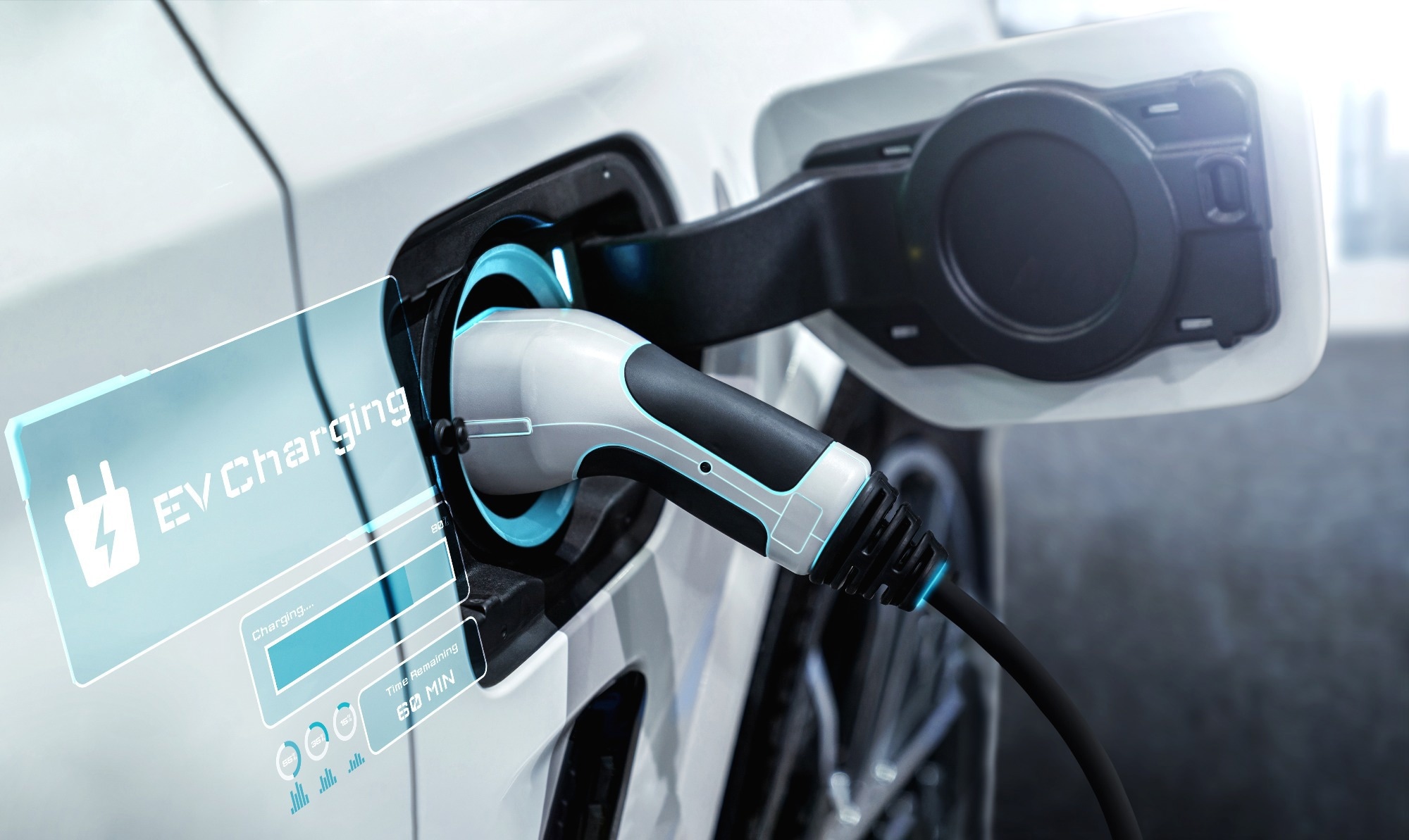In a paper published in the journal Scientific Reports, researchers undertook extensive work to develop representative actual driving cycles, conducting electric vehicle road tests and gathering associated data using the manual driving method. They introduced the Changsha driving cycle construction (CS-DCC) method, demonstrating its effectiveness in systematically constructing refined driving cycles with excellent stability and smoother patterns.
 Study: Creating Realistic Driving Cycles with CS-DCC: An AI-Driven Approach. Image credit: Summit Art Creations/Shutterstock
Study: Creating Realistic Driving Cycles with CS-DCC: An AI-Driven Approach. Image credit: Summit Art Creations/Shutterstock
Employing the Gaussian kernel principal component analysis (KPCA) algorithm, they reduced dimensionality, significantly decreasing the average error of characteristic parameters. The constructed driving cycle exhibited local characteristics, emphasizing the importance of reflecting localized driving patterns. The study showcased a significant application of artificial intelligence in advancing engineering technologies.
Related Work
Previous studies actively emphasized the development of representative driving cycles, underscoring their critical role in assessing and advancing vehicle performance. Recognizing the widening gap between actual fuel consumption and standard certification results, researchers have tried to tailor driving cycles to regional characteristics.
Various methodologies, including simulation models, optimization processes, and statistical methods, have been employed to construct driving cycles for specific regions such as Toronto, Chennai, Beijing, and Greater Cairo. These efforts aim to enhance fuel economy estimates, address real-world driving conditions, and optimize vehicle performance indicators, showcasing the importance of region-specific driving cycles in the automotive industry.
Comprehensive CS-DCC Method Overview
This study introduces the proposed CS-DCC method to generate a representative driving cycle from original data systematically. The technique involves a sequential process encompassing seven steps: data preprocessing, micro-trip division, characteristic extraction, dimensionality reduction, micro-trip clustering, driving cycle establishment, and optimization. The data preprocessing phase addresses missing, abnormal, and noise reduction using a sequential approach, including multi-scale wavelet analysis for noise mitigation.
Micro-trip division segments the continuous data according to the CS-DCC method, and characteristic extraction involves extracting 14 parameters from micro-trips. The study actively utilizes the KPCA algorithm for dimensionality reduction, applies the Birch algorithm for micro-trip clustering, and employs the Markov chain Monte Carlo (MCMC) method to establish the driving cycle. Finally, an improved autoencoder optimizes the constructed driving cycle to minimize the average error of characteristic parameters with the entire dataset.
Data preprocessing involves interpolating missing and abnormal data and noise reduction. Abnormal data, such as intermittent low-speed driving, are addressed by setting values and eliminating segments exceeding specified limits. The micro-trip division step segments the speed-time curve based on the trajectory of "end of idling—driving—end of idling." Characteristic extraction involves calculating 14 parameters related to speed, acceleration, and time percentage, with KPCA used for dimensionality reduction.
Using the Birch algorithm, the micro-trip clustering phase categorizes vehicle speed into low, medium, and high classes. The driving cycle establishment step utilizes the MCMC method, estimating posterior distributions to construct the actual driving cycle. An improved autoencoder enhances representativeness in the driving cycle optimization phase. This autoencoder integrates physical constraints into the design, using the average error of characteristic parameters as the characteristic loss and employing weighted summation with the reconstruction loss. The improved autoencoder structure comprises input, hidden, and output layers, with an encoder and decoder for down-sampling and up-sampling, respectively.
In summary, the CS-DCC method offers a comprehensive approach to generating a representative driving cycle by addressing data preprocessing, micro-trip segmentation, characteristic extraction, dimensionality reduction, clustering, establishment, and optimization, showcasing its potential in creating realistic and reliable driving cycles for various applications.
Experimental Setup and Methodology
In the experimental setup, three light-duty battery electric vehicles actively utilized the speed data acquisition instrument, controller area network (CAN) module, and transmission line in Changsha, China, for data collection at a frequency of 1 Hz. The research opted for the manual driving method to capture real-world conditions freely, recording data for vehicle speed, torque, and accelerator pedal opening.
Driving paths covered the city extensively, with data collection scheduled between 7:00 a.m. and 6:00 p.m. to account for varying traffic conditions. After addressing missing and abnormal data through interpolation and noise reduction, the study extracted 2550 micro-trips from the datasets. The study actively demonstrated data refinement after noise reduction, highlighting enhanced stability and a smoother pattern compared to the original data.
Next, the study actively examined Pearson correlation coefficients between the 14 characteristic parameters, revealing strong positive or negative correlations. Researchers addressed this challenge by employing the KPCA algorithm for dimensionality reduction, ultimately selecting five principal components to achieve a cumulative contribution rate of 85.99%. They chose the Gaussian KPCA algorithm for dimensionality reduction based on its balanced outcomes in clustering.
The study employed the Birch algorithm for categorizing micro-trips, followed by the MCMC algorithm for driving cycle construction, refined with an improved autoencoder. This process achieved a significant 55.1% reduction in average error. Comparative analysis with a simulated annealing-based method revealed a 37.1% average error reduction, emphasizing the distinctiveness and advancements of the proposed CS-DCC method. Overall, the study showcased the efficacy of the methodology in engineering realistic driving cycles tailored to actual driving conditions.
Conclusion
In conclusion, this study systematically developed a representative driving cycle through the CS-DCC method, utilizing electric vehicle road tests and manual driving data. After noise reduction, the refined data exhibited increased stability, and Pearson correlation coefficients underscored significant parameter correlations. Opting for the Gaussian KPCA algorithm for dimensionality reduction, the study achieved an 85.99% cumulative contribution rate with five principal components.
The application of an enhanced autoencoder resulted in a significant 55.1% reduction in the average error of the optimized driving cycle. Overall, the CS-DCC method proved effective in constructing localized and representative driving cycles, showcasing the impact of artificial intelligence in advancing engineering technologies.